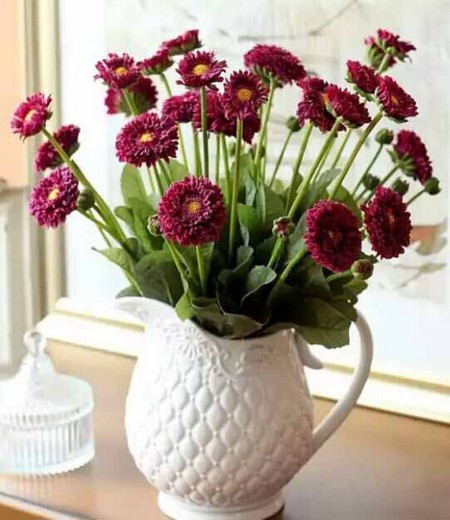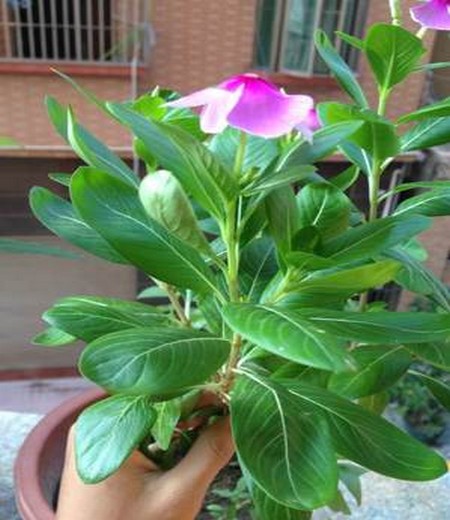Culture methods and matters needing attention of Catharanthus roseus
Catharanthus roseus is a kind of flower and plant that we often see, which can be seen in roadside flower beds and other places. The flowers are very bright and red. In fact, Catharanthus roseus is very suitable for planting in potted plants to decorate homes. Let's take a look at the breeding methods and points for attention of Catharanthus roseus.
1. Soil:
Suitable for fertile and well-drained soil, resistant to barren soil, but do not be alkaline. Clayey soil with hardening and poor ventilation results in poor growth of plants, yellowing leaves and no flowering.
2. Sunshine:
Catharanthus roseus is a light-loving plant, there must be sufficient sunshine during the growing period, the leaves are green and shiny, and the flowers are bright. If you grow in the shade for a long time, the leaves will turn yellow and fall.
3. Temperature:
Prefer a warm, slightly dry and sunny environment. The suitable temperature for growth is 18: 24 ℃ from March to July, 13: 18 ℃ from September to March of the following year, and the winter temperature is not lower than 10 ℃. When the temperature is above 5 ℃, Catharanthus roseus is dormant, and the pot soil should be dry but not dry. The following spring, pruning the old plants to change pots, pay attention to water and fertilizer management, but also send new branches to blossom.
4. Watering:
Catharanthus roseus avoid dampness and fear of waterlogging, basin soil watering should not be too much, too wet affects growth and development. In particular, indoor winter plants should be strictly controlled watering, it is better to dry, otherwise it is easy to freeze. Open field cultivation, midsummer showers, pay attention to timely drainage, so as not to cause the whole area to die by waterlogging.
5. Fertilization:
When applying fertilizer, compound fertilizer and liquid fertilizer can be applied alternately every ten days. The bottom of the Catharanthus roseus pot soil should also be covered with a layer of base fertilizer as far as possible to ensure the nutrient content of the pot soil.
6. Pruning:
Catharanthus roseus is a herbaceous plant, which is more suitable for potted plants, but it should be careful not to let the plant grow too high, affecting indoor decoration and ornamental, so after surviving in the pot, it is necessary to pick the heart several times to promote multiple branches and more flowering, and the residual flowers must be cut off after flowering. Pruning and transplanting should be topped 2-3 times at the initial stage of pruning and transplanting to inhibit plant height and promote multi-branching, and form a plump plant shape.
If the plant after flowering is tall and not suitable for family layout, it can be cut down again to ensure adequate light, water and fertilizer supply, and new branches can sprout and blossom.
7. Diseases and insect pests:
Catharanthus roseus plants are poisonous, so they are more resistant to diseases and insect pests. The main diseases in seedling stage are: seedling quenching disease, Botrytis cinerea and so on. In addition, it is necessary to prevent the occurrence of fertilizer damage and drug damage in seedling stage. If it happens, it should be watered with clean water immediately to strengthen ventilation and reduce the harm.
Four Seasons maintenance skills:
1. When sowing in early April, it is best to use loose and fertile loam in basin soil. When the sowing seedlings grow to 8-10 cm, they are transplanted into pots. When transplanting, you should bring dormitory soil. After transplanting survived, it was cultured in a place with light. Hit the top 2-3 times. Thin fertilizer should be applied once after the first two topping. Fat should not be too much, it is easy to cause crazy growth and lodging when too much. After the lateral branches topped for the last time, the water was slightly controlled to make the basin soil dry and stop fertilization to restrain its growth height. Keep the basin soil moist after budding and apply thin fertilizer once to facilitate flowering.
2. Catharanthus roseus likes high temperature and is resistant to strong sun in summer. It should be cultivated in places with light in summer. Summer is the peak season for the growth and flowering of Catharanthus roseus. Attention should be paid to watering to keep the soil moist. Generally, water should be watered once in the morning and evening. Apply thin fertilizer diligently.
3. The management in autumn and early autumn is the same as that in summer. Catharanthus roseus can not tolerate low temperature. When the temperature is cool in autumn, Catharanthus roseus blossoms will decrease. Sufficient light should be ensured and fertilization should be stopped. With the decrease of air temperature, the growth potential of Catharanthus roseus gradually weakens, so we should reduce the amount of water and keep the basin soil moist. Before the temperature drops at the end of autumn, it should be moved into the closed balcony with light in time to prolong the florescence. If the temperature in the balcony is not high in winter, it can be abandoned after the periwinkle stops blooming.
4. The light and temperature conditions in the balcony in winter are better (the lowest temperature is above Qiao ℃), Catharanthus roseus can continue to grow and bloom. Pot soil should not be too wet, moist is better, do not apply fertilizer, otherwise it is easy to cause decay.
Note:
When planting Catharanthus roseus in pots, use loose soil rich in humus, and put on the pot when the seedlings grow 6-7 true leaves. When the seedling height is 7-8 cm, the heart can be picked once, and then twice, in order to promote multiple branches and more flowering. At ordinary times, Catharanthus roseus should not be watered too much, too wet will affect its growth and development. If some nitrogen fertilizer is applied to Changchun peanut for a long time, some phosphate fertilizer can be applied in the bud stage. The residual flowers must be cut off after blooming.
Catharanthus roseus avoid dampness and fear of waterlogging, basin soil watering should not be too much, too wet affects growth and development. In particular, indoor winter plants should be strictly controlled watering, it is better to dry, otherwise it is easy to freeze. Open field cultivation, midsummer showers, pay attention to timely drainage, so as not to cause the whole area to die by waterlogging.
Time: 2019-06-01 Click:
- Prev

Key points of daisy conservation
Daisies like cool climate and avoid hot. Like light, but also resistant to semi-shade, the cultivation of soil requirements are not strict. The optimum temperature for seed germination and growth was 22-28 ℃ and 20-25 ℃ respectively. It is suitable for planting single or semidouble varieties of medium and small flowers in southwest China. The double petal varieties of medium and large flowers have weak growth and poor seed setting.
- Next

How to raise Catharanthus roseus? Culture techniques of Catharanthus roseus
Catharanthus roseus has a long flowering period, beautiful colors and beautiful posture, and with the development of modern technology, the varieties of Catharanthus roseus cultivated by people are becoming more and more beautiful, which is very suitable for indoor potted ornamental plants. Raising a pot at home may have an unexpected effect. So how to plant Catharanthus roseus well
Related
- Fuxing push coffee new agricultural production and marketing class: lack of small-scale processing plants
- Jujube rice field leisure farm deep ploughing Yilan for five years to create a space for organic food and play
- Nongyu Farm-A trial of organic papaya for brave women with advanced technology
- Four points for attention in the prevention and control of diseases and insect pests of edible fungi
- How to add nutrient solution to Edible Fungi
- Is there any good way to control edible fungus mites?
- Open Inoculation Technology of Edible Fungi
- Is there any clever way to use fertilizer for edible fungus in winter?
- What agents are used to kill the pathogens of edible fungi in the mushroom shed?
- Rapid drying of Edible Fungi

